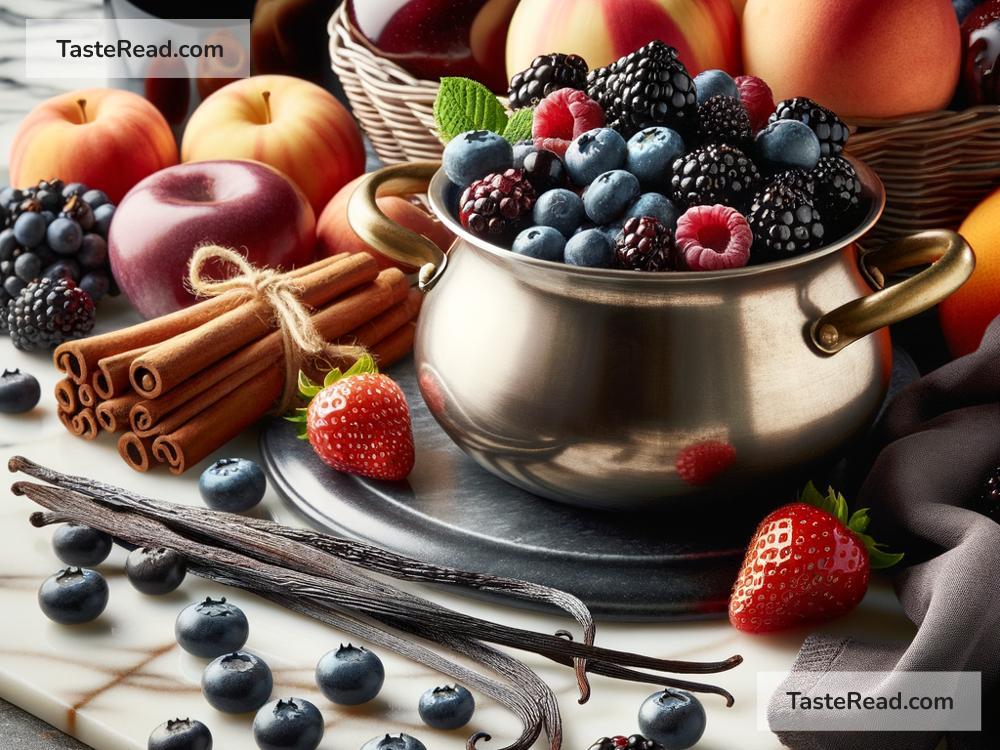How to Make Complex Fruit Compotes for Fine Dining Desserts
When it comes to fine dining, every dish served is a piece of art, not only in appearance but in taste and complexity. This is especially true for desserts, where the sweet end note must be absolutely perfect. One way to elevate your desserts is by incorporating a complex fruit compote. But don’t worry, “complex” doesn’t mean “complicated.” Let’s break down how to create restaurant-quality fruit compotes that will add a layer of sophistication to your desserts.
What is a Fruit Compote?
First things first, a fruit compote is essentially fruit cooked in sugar syrup. It can include a single type of fruit or a mix, often enhanced with spices, citrus zests, or liqueurs. The beauty of a compote lies in its versatility; it can complement everything from pancakes to panna cottas, making it a staple in your fine dining dessert arsenal.
Choosing Your Fruit
The foundation of a great compote is the fruit. Think about the season and what’s fresh. Seasonal fruits tend to have the best flavor and texture, making your compote shine. Berries, peaches, cherries, apples, and pears all make excellent choices, but don’t be afraid to experiment with more exotic fruits or combinations.
Prep Your Fruit
Prepping your fruit is key. Wash your fruits thoroughly, peel if necessary (like for peaches or apples), and cut them into uniform pieces. This not only ensures they cook evenly but also enhances the visual appeal of your compote.
Sweeten It Up
Sugar is essential in a compote, but how much you use can vary. Start with a ratio of about 1 cup of sugar to 4 cups of prepared fruit, then adjust to taste. Remember, the goal is to accentuate the fruit’s natural flavors, not to create a sugar bomb.
For added complexity, consider using different types of sugars (brown sugar, honey, maple syrup) or adding sweetness with a twist, like a splash of orange juice or a dollop of jam.
Spice It Up
This is where your compote goes from simple to complex. Spices and aromatics add depth. Cinnamon, vanilla, star anise, cloves, and cardamom are all excellent choices. Citrus zest can also add a refreshing note. The key is to add these elements sparingly; you want them to complement the fruit, not overpower it.
The Cooking Process
Now, to the stove! Combine your prepped fruit with the sugar and your chosen enhancements in a saucepan over medium heat. If your fruit is very juicy, you might not need extra liquid. If it’s on the drier side, add a splash of water or fruit juice.
Bring the mixture to a gentle simmer, stirring occasionally. Here, patience is your friend. You want the fruit to become tender and the liquid to thicken slightly, which can take anywhere from 15 to 30 minutes depending on the fruit and your desired consistency.
Remember, the compote will continue to thicken as it cools, so it’s okay if it’s a bit runnier than you’d like it off the heat.
Finishing Touches
Once your compote is cooked, a world of customization options opens up. A splash of quality liqueur or brandy can add an upscale touch, while a dash of balsamic vinegar can introduce a welcomed tang.
Let your compote cool, then taste it. Adjust the flavors as necessary, adding a bit more sugar, a squeeze of lemon juice for acidity, or a pinch more spice.
Serving Your Masterpiece
Now that your beautiful fruit compote is ready, it’s time to pair it with the perfect dessert. The beauty of compote is its versatility; it pairs wonderfully with creamy desserts like cheesecakes, rich items like chocolate fondants, or even simple vanilla ice cream.
When serving, think about texture and temperature contrasts. A warm compote can turn a simple scoop of ice cream into an unforgettable dessert experience. Similarly, a chilled compote can bring freshness to a warm, dense cake.
Conclusion
Creating a complex fruit compote for fine dining desserts is an art, but certainly not an unattainable one. By choosing the right fruits, adding a balanced sweetness, spicing it up wisely, and cooking with care, you can transform simple fruit into an exquisite dessert topping that will impress any guest. Remember, the key lies in simplicity and letting the natural flavors shine, so don’t hesitate to experiment and find what combinations speak to you. Bon Appétit!


